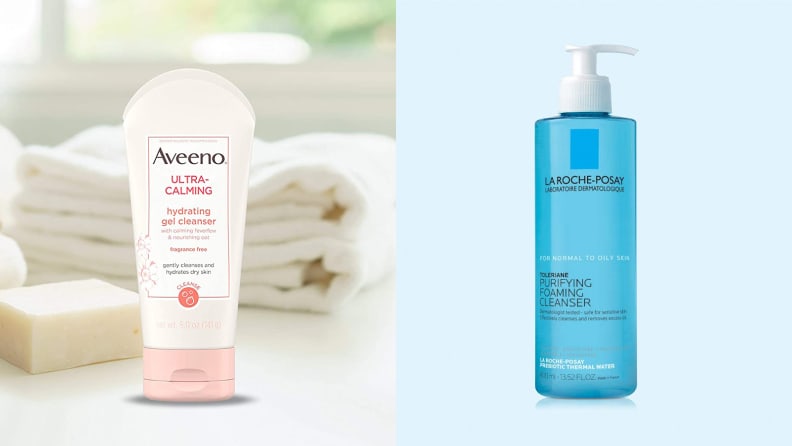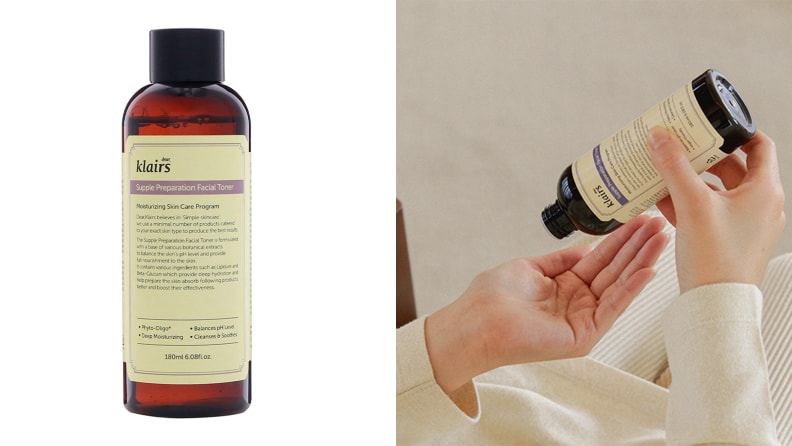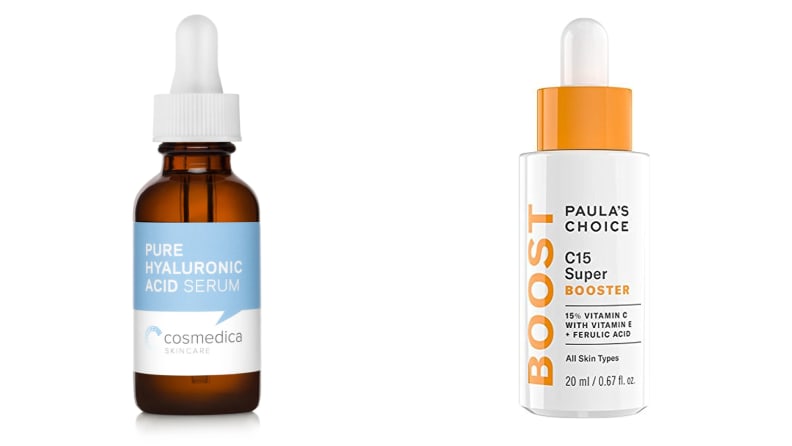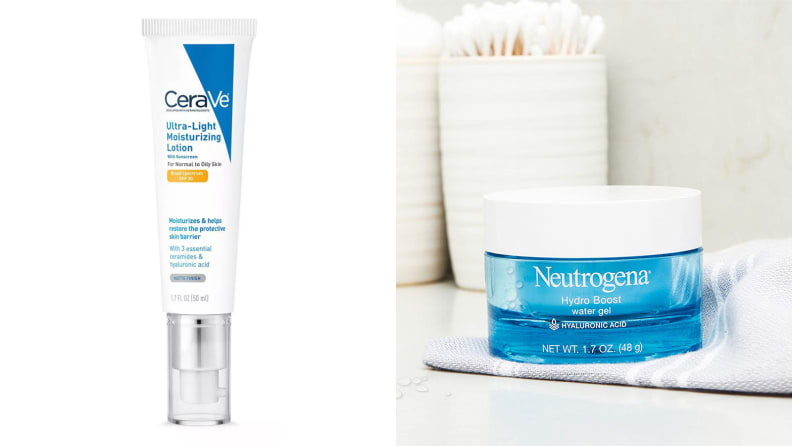The real reason you need to moisturize oily skin
A dermatologist explains the importance of keeping oily skin hydrated
Products are chosen independently by our editors. Purchases made through our links may earn us a commission.
When your face is shiny, makeup slides around, or you see whiteheads or blackheads pop up around the face, these are signs that your skin type is oily. And because your face may feel or appear slick as opposed to normal or dry, you may be tempted to skimp on the moisturizer or skip it altogether. However, this can actually be counterproductive, says Dr. Farah Moustafa, a Boston-based dermatologist with Tufts Medical Center.
Here’s why it’s so important to keep moisturizer in a skincare routine for oily skin.
Why you need to moisturize oily skin
Despite the annoyance it may cause you, the oil on your skin moisturizes and creates a barrier that keeps irritants from permeating into the skin. Of course, you need to wash your face regularly to slough away those irritants and dirt, but when that oil is washed away, your skin barrier needs replenishment from a moisturizer. “If you are constantly stripping the skin using these toners or alcohol-based toners, you can actually rev up oil production,” Moustafa says. In other words, oil-stripped skin can overcompensate by producing even more oil. Explains Moustafa, “By keeping your skin adequately moisturized, you can actually suppress excess oil production.”
Along with needing oil to keep your skin moisturized (defined as the presence of oil), your skin needs water to stay hydrated, or the presence of water, which can also come from moisturizer. And yes, your skin can be oily and dehydrated. Oily skin—along with dry, combination, and balanced skin—is a skin type, while dehydration can affect all skin types, due to over-washing; environmental factors, such as wind and cold, dry air; and even just not drinking enough water.
Without the inclusion of a moisturizer, or at least a serum that replenishes and seals in hydration, water evaporates off of the skin and causes a tight, lackluster feeling and pronounced fine lines and wrinkles. “You need both [water and oil] and you need a good balance of both for healthy skin and to maintain what’s called your ‘barrier function.’” Skin barrier function refers to your epidermis’ ability to retain water and create an impermeable barrier from outside irritants, like bacteria, fungus, and other harmful microorganisms.
To keep oil in check and your skin healthy, you want to establish a hygiene routine that’s geared toward your skin’s needs.
Step 1: Cleanse your skin without stripping it

Choose a gel or foam cleanser that'll take away excess oil, dirt, and makeup without stripping the skin.
For oily skin, you want to wash your face twice a day, morning and night, to remove excess oil and wash away dirt, makeup, and other impurities on the skin’s surface. Both gel and foam cleansers, as opposed to cream or oil, can do this, while being gentle enough to keep your skin barrier intact and ready to defend your skin from any outside aggressors.
If your skin is very sensitive or prone to acne, try the Aveeno Ultra Calming Hydrating Gel Cleanser, which claims to clean and rebalance your skin with a formula that’s hypoallergenic, non-comedogenic (it won’t clog pores), and fragrance-free.
The La Roche-Posay Toleriane Purifying Foam Cleanser is another great option for easily-irritated skin, but it hydrates and protects the skin with ceramide-3, “prebiotic thermal” water, glycerin, and niacinamide.
- Get the Aveeno Ultra-Calming Hydrating Gel Facial Cleanser on Amazon for $9.33
- Get the La Roche-Posay Toleriane Purifying Foam Cleanser on Amazon for $13.99
Step 2 (optional): Tone very oily skin

If your skin is very oily, you can use a toner to balance it.
Moustafa doesn’t generally recommend toner to her patients, as it can be overly drying to the skin, but many people like the clean feeling they get from using one, particularly if they have very oily skin. You may use a toner to regulate oil, but make sure it’s not alcohol-based, as those are too harsh. Look for one that uses apple cider vinegar, witch hazel, rosewater, purified waters, micellar water, or calendula. The key is to not overdo it with this step, as you don’t want to strip your skin of all of its moisture. If you try it and your skin gets oilier, or feels tight or red, you should consider eliminating it from your routine.
If you opt into this step, the Klairs Supple Preparation Toner includes hyaluronic acid to hydrate and aloe and other plant extracts to soothe as it balances the skin’s oil levels.
Get the Klairs Supple Preparation Toner on Amazon for $20
Step 3 (optional): Address specific concerns with a serum

Add serums into your routine if you want to target specific skin concerns.
Serums are not necessary for a good hygiene routine, but you may find you like adding this step, particularly if you have a skin concern you’d like to target, such as dehydration or anti-aging.
For dehydrated skin, one worth trying is the Cosmedica Hyaluronic Acid Serum. It includes a high concentration of hyaluronic acid, which can hold up to 1,000 times its weight in water to help your skin retain hydration and look smoother and plumper.
For a serum that’ll protect your skin from the environment and reduce the look of fine lines, wrinkles, and dark spots, consider one with vitamin C. The Paula’s Choice C15 Super Booster uses 15 percent ascorbic acid (vitamin C) to improve the tone and texture of the skin, as well as fight against free radicals that age the skin, and ferulic acid and vitamin E keep the vitamin C stable for longer.
- Get the Cosmedica Hyaluronic Acid Serum on Amazon for $14.99
- Get the Paula’s Choice C15 Super Booster on Amazon for $49
Step 4: Apply moisturizer to replenish your skin barrier

Replenish your skin's protective barrier with a moisturizer.
As you know now, this is a non-negotiable for healthy skin. But using a moisturizer doesn’t mean adding a slick or greasy coating to your skin. For a comfortable feel, go with a gel-based, oil-free moisturizer to follow up your cleanser.
A great option for daytime is the CeraVe Face Moisturizer with SPF 30. It’s suitable for normal-to-oily skin with a non-greasy feel, and it contains ceramides (lipids found in the outermost layer of the skin) to protect the skin barrier. With broad spectrum protection, your skin is safe from damaging UVA and UVB rays.
For a nighttime moisturizer, try the Neutrogena Hydro Boost Water Gel, which hydrates with hyaluronic acid and claims to absorb quickly for a lightweight feel. Plus, it’s fragrance-free for those with sensitive skin.


